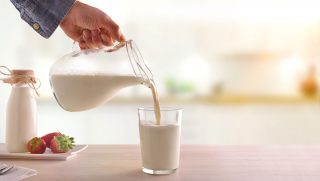Inflation has driven up the costs on many fronts, including on America’s dairy farms. A sharp decline in the number of dairy heifers available to replace older cows exiting the U.S. dairy herd could limit any meaningful growth in domestic milk production over the next few years.
According to data from the U.S. Department of Agriculture’s most recent cattle report, the number of dairy replacement heifers has fallen almost 15 percent over the last six years, reaching a 20-year low. While the global demand outlook for U.S. dairy products remains murky due to export market uncertainties, any potential growth opportunities may be stymied by an inability to expand U.S. milk production.
According to a new report from CoBank’s Knowledge Exchange, the rising cost of rearing dairy heifer calves has far outpaced increases in heifer values over the last several years. That imbalance has prompted dairy farmers to reduce their heifer replacement inventories, in large part by breeding more dairy heifers and cows to beef bulls. Contraction in the U.S. beef herd due to drought and other adverse conditions has led to record-high prices for beef cattle and retail beef products.
“Raising dairy heifers has been a losing proposition for most farmers in recent years, to the tune of $600-$900 per animal,” said Corey Geiger, lead dairy economist for CoBank. “To better manage on-farm heifer inventories, dairy farmers have turned to using beef semen on a portion of their dairy herd to reduce the number of replacement heifers. That’s enabled farmers to cut the costs associated with raising heifers and generate additional income from beef sales.”
Less than a decade ago, dairy heifers sold for a tidy profit, but rearing costs today mean they sell at a loss. While heifer-rearing cost estimates vary, they are all trending upward.
University of Wisconsin Extension survey data from 1999 to 2015 found the total cost to raise a dairy heifer from birth to entering the milking herd climbed from $1,360 to $2,510 per head. In a similar analysis looking at 2016 to 2021, Penn State Extension specialists calculated heifer rearing costs averaged $2,034.
Meanwhile, heifer values have not kept pace with higher rearing costs. From April 2018 to USDA’s January 2022, the sale price of dairy heifers never exceeded $1,400 per head, according to Agricultural Prices report. The discrepancy between rearing costs and sale value led to a prolonged and steady decline in replacement heifers in recent years.
Some fluctuation in the population of replacement heifers is a natural outcome of market and economic forces. However, a sufficient inventory is important to the continuity of U.S. milk production and critical to the industry’s ability to expand. While the number of replacement heifers has dropped to a 20-year low, the overall U.S. dairy herd has been stable, with 9.3 million to 9.4 million head of dairy cows over the last six years.
The steep drop in heifer supply went largely unnoticed until recently when dairy farmers went looking to buy now-scarce replacements. As a result, dairy replacement prices have now jumped to an eight-year high, with USDA data and auction market reports ranging from $1,890 to $2,800 per head. These higher replacement values will likely be in place for the foreseeable future given the tight supply.
Geiger said the shrinking replacement pipeline will impact the ability to grow U.S. milk production for some time. “Even if dairy producers reverse course and use more dairy bull semen in the coming years, it will be two to three years before the resulting dairy calves even reach the milking barns,” he said.
»Related: CattleFax: Cattle and beef prices will continue to break records


